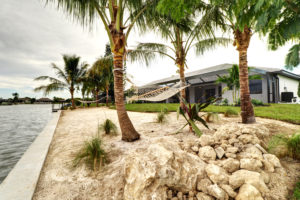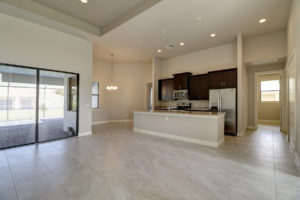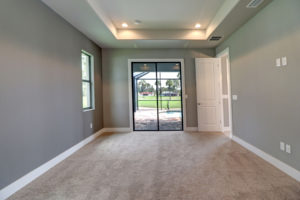First thing first….what is a CMA?
By definition, a Comparative Market Analysis report or CMA is “an estimate of the value of a property based on an analysis of sales of properties with similar characteristics.”
Sadly, some agents thinks this means plugging in a bunch of numbers into a form equates to a good CMA. Wrong! It is so much more than that! Not only must you have a thorough knowledge of property sales in your area, you must also be able to make judgments on the data presented.
This blog is for real estate agents who have had minimal or no experience completing a CMA. Writing a CMA has a lot of moving parts and can be very intimidating at first. If you follow these easy steps, you will not only produce a CMA; you will generate the most accurate value of the property. You will want to lean on this guide throughout your career until writing an outstanding CMA becomes second nature to you.
In order to know what makes an outstanding CMA, you must first understand the basics of a CMA.
There are two simple reasons for completing a CMA:
- When you’re working with sellers to determine a listing price.
- When you’re working with buyers to check a value before an offer to purchase.
There are 3 main parts of a CMA:
- Finding Comparable properties (comps) and looking up tax info
- Inspecting the property and taking photos.
- Reconciliation of all the information
“A subject property is the property you are attempting to determine the value of and a ‘Comps’ are the comparable properties to your subject property” – Jeremy Sposato
1. Comps & Taxing Info:
The first part of completing a CMA will consist of a lot of research, then more research and finally more research!
To obtain the necessary information on your subject property, first you must pull the tax records. The relevant property information you will need is; age, lot size, square footage, improvements, pool, etc. I am normally not a huge fan of paper, but I suggest printing out the tax record and highlighting/circling these areas for quick reference later. Next, you want to search MLS to check to see if the property is currently listed and/or if there is a prior sale record.
Now that you have your subject property information, it is time to pull comparable properties or “comps” from MLS.
As a general rule, you are going to need 3 sold/closed comps and 3 active listings comps.
All comps should be:
- Within one mile of subject property
- Similar in style (i.e. ranch style home, duplex, 2-story home, etc)
- Similar in construction (i.e. wood frame, CBS, etc)
- Similar lot sizes
- Similar in size
- Similar age (do not exceed 10 years on either side)
- Similar neighborhood amenities
- Similar condition
- Similar improvements (i.e. pool, tile roof, etc)
- Similar view (canal, lake, river, none)
- Within 6 months of sold date
Sometimes it is necessary to use dissimilar comps, i.e. forced to go outside of the one mile radius due to a rural area. Just remember to make a note in the comment section explaining why and what you did to adjust for it.
Ex: Due to subject property’s rural location, it was necessary to use comparable(s) outside of the standard one mile radius. Adjustments were made accordingly.
If you are completing a CMA or “BPO” for a bank, they may require require photos of the comparable properties you used in your report; the most efficient way to do this is to save the photos from MLS while you have them on your screen at the time of your comparable search.
2. Inspection/taking pictures:
If you have more than one CMA to complete, time management is essential! Be sure to schedule and arrange your inspections using mapping features on Google maps to properly plan out your routs. Always stay organized!
As you are taking your exterior/interior photos, be sure to take notes and photos of any property damage you come across. I like to start an email to myself with the property address in the subject line. I add my notes to the email and just send it to myself once I am done inspecting the property. When I get back to the office I can then review the email and all my notes.
3. Exterior inspection should include:
- Check all exterior windows and screens
- Check entry doors, doorbells & any outside light fixtures
- Check the condition of the exterior paint and/or siding
- Does it need touching up or repainting?
- Check the soffits, fascia & trim
- Need paint, any rot?
- Missing vent screens
- Check along the outside of the foundation
- Any termite tunnels?
- Any severe cracking or settling?
- Check the roof
- Any damage? Missing shingles/tiles?
- Will it pass for roof certification?
- Landscaping
- Is it overgrown or is it well-kept?
- In-ground pools
- Equipment in place?
- Cracker or damaged walls or liner?
- Bowing walls or coping?
- Heater missing?
- Fenced-gates locked and secured?
Exterior photos to be taken:
- Front of subject property
- Address Verification (Zoom in on the address numbers only, this might be located on the mailbox or the house)
- Street Scene (both directions)
- Both sides of the house
- Rear of subject property
- Pool/spa/lanai (if applicable)
- Canal (if applicable)
- Any signs of deferred maintenance
Here are some examples of good exterior photos:








Interior Inspection:
The interior inspection is very important, you will need to go through the interior of the property room by room. Take one or two pictures of each room and take a separate picture of any damaged or missing items. Remember, keep that email handy so that you can take proper notes as you go through the home.
“If the property is occupied, be sure your photos do not include any homeowners or pets in your photos. Remember, this may become a listing for you, be sure that you can use the photos in the MLS to market the property” – Jeremy Sposato
Living room, dining room, family room, bedrooms, offices, etc:
- Check condition of walls and paint
- Does it need to be repainted?
- Are there holes that need to be patched?
- Condition of carpet
- Is it worn or soiled?
- Can it be cleaned or does it need to be replaced?
- Look for ceiling stains or leaks
- Is there evidence of roof leaks?
- Do the ceilings need to be repainted?
- Check windows and window frames
- Are there broken window panes?
- Missing or torn screens?
- Broken locks?
- Evidence of rotting around frames?
- Light switches and electrical outlets
- Are there any missing outlets/switch plate covers?
- Are there exposed wires?
- Closet doors/frames
- Are the doors in good shape, do they need to be rehung or replaced?
- Lighting fixtures, ceiling fans, smoke detectors
- Are the fixtures in place, are they missing?
- Smoke detectors-are they in place? Do they need new batteries?
- Flooring
- Are the floors uneven?
- Is there foundation/settling problem—weak spots, rot?
- Pest Infestation
- Do you see dead bugs or droppings?
Kitchen:
- Flooring
- If ceramic; broken tiles, missing grout?
- If vinyl; tears, burns, etc?
- Cabinets
- Missing doors, drawers, etc?
- Missing/broken hardware; knobs, etc
- Countertops
- Tile/Mica-Damaged, burned?
- Appliances
- Stove-gas or electric?
- Check to be sure everything works; burner, pilots, oven, clock, fan, light, etc
- Dishwasher
- Check for leaks
- Refrigerator
- Is everything working? Ice machine, water dispenser, freezer, etc
- Garbage disposal
- Does it work? Leaks?
- Sinks
- Leaking faucets?
- Leaks under sink?
- Evidence of rotting or damage from old leaks?
- Chips or cracks?
- Ceiling
- Evidence of roof leaks?
- Lighting
- Missing?
- Working?
- Outlet Switches
- Missing switch plates/outlet covers?
- Exposed wires?
- GFI Breakers working?
- Plumbing
- Leaks around sinks?
- Dishwasher lines
- Refrigerator-ice maker line
- Stove-gas or electric?
Bathrooms:
- Flooring
- If ceramic; broken tiles, missing grout?
- If vinyl; tears, burns, etc?
- Sinks
- Leaking faucets?
- Leaks under sink?
- Evidence of rotting or damage from old leaks?
- Chips or cracks?
- Showers/Tubs
- Leaks?
- Broken/damaged tile?
- Rot?
- Enclosure damaged or in bad condition?
- Toilet and Tank
- Cracked or broken?
- Internal parts need replacement?
- Vanity and Mirrors
- Mirrors broken/missing?
- Vanity cabinets damaged?
- Countertop broken, burned, etc?
- Lighting and Exhaust Fans
- Working?
- Electrical outlets and switches
- Missing covers, switch plates?
- GFI’s working?
Hall(s)—Common areas:
- Thermostats
- Missing/damaged?
- Attic access?
- Closets and doors
Garage:
- Walls/ceilings
- Damaged sheetrock?
- Leaks?
- Electric garage door openers?
- Light switches, outlets & fixtures?
Mechanical Systems:
- Heating/Cooling Systems
- Run both heat and air conditioning
- Check filters
- Check all zones if applicable
- Check water softener for leaks
- Check for leaks around water main
- Check breaker/fuse box for damage or vandalism
- Check electrical meter for signs of tampering
Interior Photos to be taken:
- Living area
- All bathrooms
- All bedrooms
- Kitchen (with appliances or where they once were)
- Garage
- Laundry room
- Any damage throughout the subject (holes in walls, stained carpets, missing appliances, broken windows, damaged doors/doorways, etc)
- Any additional rooms (i.e. office, etc)
Examples of good interior photos:






Reconciliation:
This is where all the pieces begin to fit together. Now it’s time to head over to your computer and download your subject’s photos. Be sure to create a folder on your computer using the property address and save all your pictures there.
Start with the top section of your CMA and begin transferring the subject information into the appropriate blanks on your CMA form.
Final Valuation:
There are 7 Type of Values:
- Marketable As/Is Value: Normal sales price as the way it sits right now, assuming a normal period of time on the market and that the house will qualify for most types of financing so that a typical buyer can buy it.
- As Repaired Value: Same as above, but after the property has been fixed up and brought up to the same condition that the other houses in the neighborhood are.
- As-Is Cash Value: Typically what the house would sell for-all cash to an investor—generally at a discount. Although asked for often, it is seldom used unless the property is in such bad condition that it would not be eligible for any conventional type financing.
- Quick Sale Value: Can be in combination with any of the above-but assumes property must be sold in 30 days or less.
- Land/Lot Value or Unimproved value: What the ground itself would be worth without the house or improvements. The value of just the lot.
- Improved Value: Exact opposite of unimproved value-what the house would be worth without the land—generally the cost of replacing the house with a similar unit less accrued depreciation.
- Investor Value: Combination of As-Is and Quick Sale Value. How much can we dump this thing off to an investor for? All cash—30 days!
Adjustments:
Making adjustments to the comparable properties value to remove or add, the differences between your subject property and the comparable properties is essential to arriving at an accurate value. By using fair adjustments, you can determine the current market value of the subject property.
EX: If your subject property has a 3 car garage, but you cant find any comparable properties with a 3 car garage, you will have to make an adjustment. So the big question is, how much does a 3-car garage add to the value of a property, as opposed to a two-car garage, etc?
Adjustments vary greatly by market. For my local Realtor friends (lee county Florida) I have provided a list of adjustments. These will change over time.
Here is a list of adjustments for items frequently used:
| Comparative Market Analysis Property Adjustments | |
| Feature | Amount |
| 1/2 Bath | $ 1,500.00 |
| Bathroom | $ 3,000.00 |
| Bedroom | $ 5,000.00 |
| 1/2 Bathroom | $ 1,500.00 |
| Canal | $ 5,000.00 |
| Den | $ 4,000.00 |
| Chain link Fence | $ 2,000.00 |
| Fireplace | $ 2,500.00 |
| Garage (per space) | $ 2,000.00 |
| Patio/Lanai | $ 2,000.00 |
| Paver Driveway | $ 5,000.00 |
| Quality of Construction | $ 5,000.00 |
| Tile Roof | $ 5,000.00 |
| View | $ 5,000.00 |
| A/C Central | $ 3,000.00 |
| Energy Efficient – Vinyl Windows | $ 5,000.00 |
| Comparables Age +/- 10 Yrs | $ 5,000.00 |
| Variable Adjustments | |
| Sq. Footage (If over 100 sq ft. ) | DIFF X $25.00 PSF |
| Pool | 5000-8000 |
| Condition-Based on cost of Repairs | 50% of Repair costs |